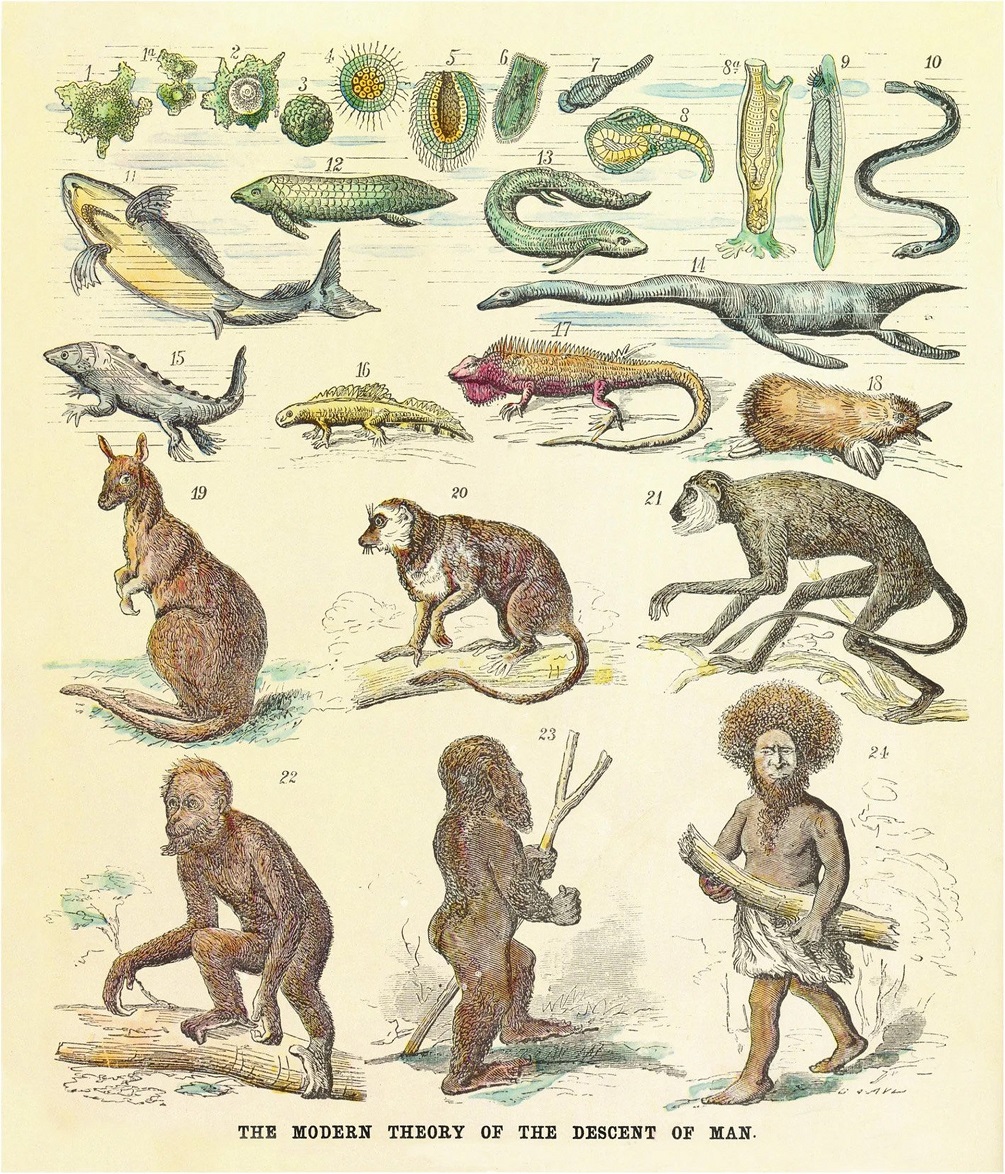
To test the theory that we have evolved from a common ancestor with a chimpanzee requires co-operation between specialists in different scientific disciplines. The quest centres on fieldwork that involves arduous searches in geological contexts, such as the lowest layers at Olduvai Gorge in Tanzania. It took Louis and Mary Leakey years before they finally found the remains of Homo habilis there, a candidate for the missing link.
There have to be the specialists who can date the geological deposits in which fossils were found and there are now several such methods. And now we have genetics, the analysis of DNA that reveals similarities and differences between us and other primates, leading to an estimate of the elapsed time between us and that last common ancestor.

The Tugen Hills lie about 2500km from the Djurab Desert in Kenya. In 2000, a thigh bone and part of a jaw were found there and named "Ororrin" meaning original man. At least 6.1 million years old, they go back to where DNA shows that we and chimpanzees share a same ancestor. Ororrin could have walked upright, lived in a wooded habitat and were adept at climbing trees.
In 1994, an eagle-eyed anthropologist spotted a hand bone near the Awash River in Ethiopia that turned out to be a near complete skeleton. Named Ardipithecus, this hominin lived 5.77 million years ago and lived on for well over a million years. Ardi stood about 1.2m tall, and weighed in the vicinity of 50kg. Ardi walked and roamed upright, but it was also adept at climbing trees.
These fossilised hominin bones represent the links in an evolutionary pathway leading to us. They almost certainly lacked a language, but surely communicated with different sounds and gestures. In order to survive for millions of years in an environment fraught with danger from predators, such as hyaenas and sabre toothed cats, they must have lived in well-structured social groups. Many new discoveries now throw some light on what came next.












